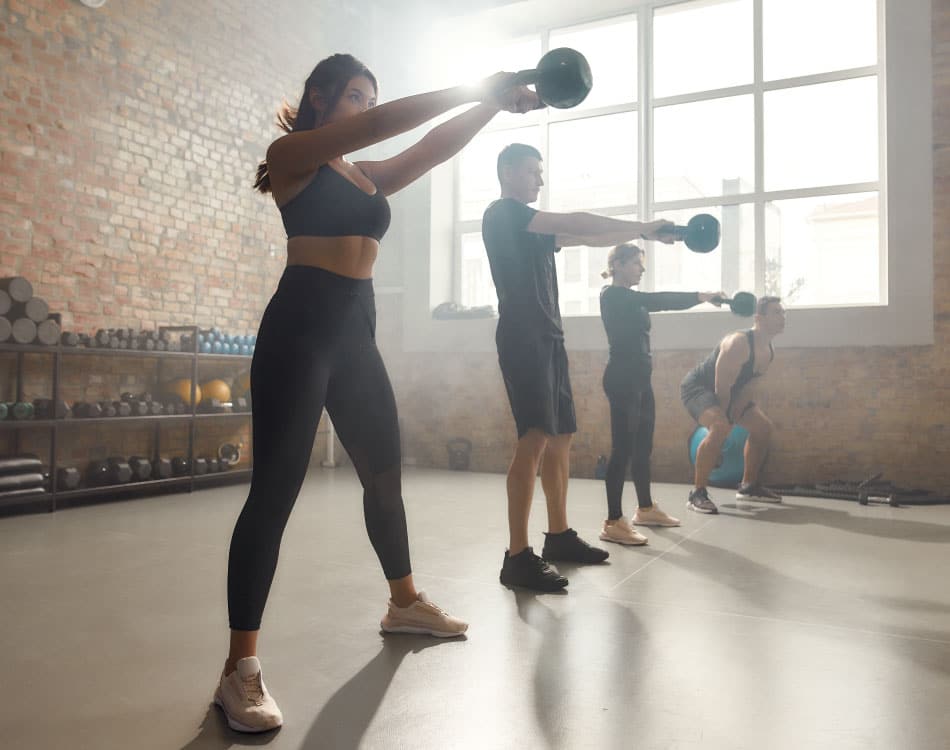The rep, or repetition is the fundamental element of any weight lifting programme and can therefore be considered one of the most important factors in any gym program.
When you consider all of the reps you execute in a month – which easily extend into the thousands – it makes sense to understand this most basic, yet extremely important element of weight training.
The rep defined
The rep is defined as a single cycle of a weight lifting, performed in a controlled manner using the correct form and technique for a specific exercise. Two or more reps are then executed consecutively to complete a set.
For something so basic you wouldn’t think that there are too many elements to consider when executing a rep. However, a proper rep has many components, such as structure, timing or tempo, and form and function.
Timing & tempo
Every weight training program clearly allocates reps for each set, but few indicate what the timing or tempo of those reps should be, nor do they define why that specific rep structure is required.
The other key element of a rep is the timing or tempo. Tempo simply refers to the rate at which you lift or pull the weights. The most commonly used tempo, popularised by strength trainers such as Australian Ian King and Canadian Charles Poliquin, normally uses three or sometimes four numbers. These numbers denote the pace for each phase of the rep, namely the time (in seconds) taken to perform the concentric, transition and eccentric phases.
An example of this tempo is a timing of 2:1:2, which means that the concentric phases should take two seconds to complete, with a one second pause during the transition phase, followed by a two second eccentric phase. When a fourth number is used, for example 1:2:1:2, it generally refers to the pause at the bottom of the movement (i.e. not the transition phase). An example of this would be the time spent with the bar in the air (starting position), above your chest, during a bench press.
By using a specific tempo you can better target energy systems and muscular adaptations, by increasing the amount of time your muscle spends under tension, as well as limit the amount of swinging and momentum used in your lifting technique. This further assists in recruiting more muscle fibres in each rep, which will ultimately build bigger muscles. As such, tempo is a key factor of your training programme and should not be ignored as it can deliver great results.
From a rep structure perspective, the number of reps you complete in a set is governed by the training principles of adaptation. Lower reps will deliver a different response to a higher rep set, for example, as these rep structures target different energy, neural and metabolic pathways.
A low rep range, considered to be between 1-5 reps, is normally used to increase strength and power and generally triggers neurological adaptations, as more muscle fibres are recruited to execute these short duration, high intensity reps.
The rep range that best targets muscle growth and structural adaptations is the 6-12 rep range. Beyond the 13+ rep range yo’ll stimulate adaptive responses that improve lactate thresholds and glycolysis.
Rep structure
From a mechanical perspective, a rep consists of three distinct phases. These include the concentric, transition and eccentric phases.
The concentric phase is when the muscle contracts (shortens) when lifting or pulling the weight. The transition phase is the mid-point of the rep and is generally considered to be the peak of the contraction. This is then followed by the eccentric or lengthening phase, which returns the weight to the starting position. The eccentric phase also involves muscle contractions, but this is generally in the form of the antagonist muscles contracting to return the agonist (the movement-initiating muscle) muscle to its resting position in a controlled manner.
Going beyond the lift
Breathing during your rep is also an important consideration. The best technique is to exhale on the concentric phase, which is the phase where the greatest force is exerted, and inhale on the eccentric phase.
Having considered all of these elements you should then be able to execute a perfect rep, and can then start including more advanced rep variations to your programme. The different types of reps include:
Types of reps
Forced reps:
Executed after momentary muscular failure, where a spotter provides the lifter with the minimum amount of assistance required to get the weight past the moment of inertia or the ‘sticking point’. This allows the trainer to increase their training volume and time under tension, without sacrificing form and risking injury.
Cheat reps:
Normally done when no spotter is around, but increases the risk of injury. A cheat rep uses momentum to drive the weight past the moment of inertia, allowing the trainer to squeeze out a few more reps in a set. This type of rep should be limited and only done if the lifter is experienced and uses the technique for the right reasons.
Rest-pause reps:
After working to failure in a set, the lifter will rack the weight and take a very short break before performing another repetition. This process can be repeated a number of times to maximise the effectiveness of this form of training.
Weight stripping:
Similar to rest-pause reps, but subsequent reps are performed using less weight each time as weights are removed for each consecutive rep.
Negative reps:
Focus on the eccentric phase of the rep by increasing the time under tension during this phase. This technique causes the greatest amount of micro-trauma to muscle tissue, so should not be used very often.
Partial reps:
Performed when only a portion of the entire exercise movement is executed. The reason for doing this would be to elicit a greater muscular adaptive response by using heavier weights than you can lift when using a full range of motion and proper form.
Burns:
By mixing partial reps into a set of full range of motion reps you can increase the intensity and volume of your training. The partial reps can be performed at any stage of the exercise set, but are normally done at the end to squeeze out additional reps.















